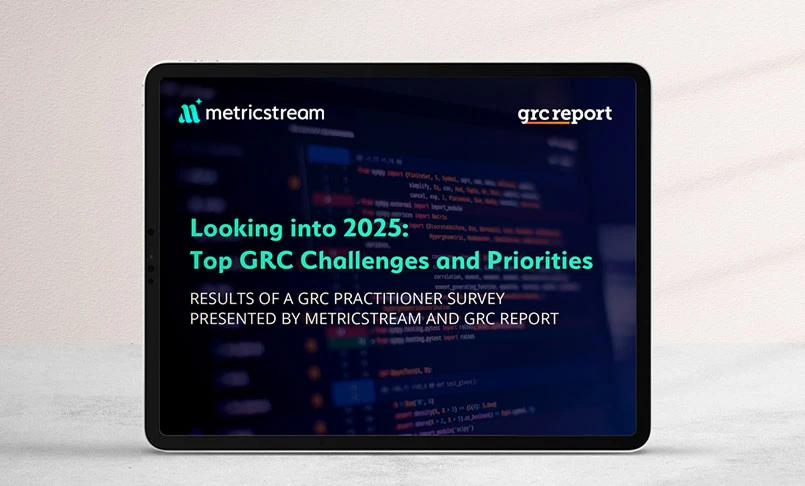Introduction
Given the dynamic and often volatile business landscape, many organizations scramble to maintain integrity, protect their integrity, and meet regulatory expectations. It's a situation that has become increasingly common, with organizations recognizing that adherence to rules and regulations is a crucial element of sustainable business operations.
As regulations evolve and new ones emerge, the complexity and volume of compliance requirements grow. So how do companies navigate this?
Compliance advisory helps organizations adopt a strategic approach to develop a comprehensive compliance program that protects them from penalties and fosters a culture of ethical conduct and operational excellence.
Key Takeaways
- Compliance advisory service helps organizations adhere to laws, regulations, and internal policies by working closely with various departments and anticipating regulatory changes.
- Compliance advisors identify risks proactively and reactively through understanding regulations, policy development, audits, incident analysis, and feedback mechanisms.
- Building a robust compliance framework involves understanding the regulatory landscape, conducting gap analyses, defining roles, establishing clear policies, leveraging technology, ensuring management commitment, and continuous monitoring.
- Key challenges in compliance advisory include data management and integration, third-party risk assessment, resource constraints, cultural and behavioral challenges, and technology adoption.
What is a Compliance Advisory?
Compliance advisory is a specialized service that helps organizations understand, implement, and uphold relevant laws, regulations, and internal policies. It plays a critical role in promoting ethical business practices, minimizing legal exposure, and fostering a culture of accountability across the enterprise.
Compliance advisors work closely with legal, risk, operations, and HR teams to ensure that every aspect of the business aligns with regulatory expectations. This includes interpreting existing laws, monitoring upcoming changes, and helping organizations stay ahead of evolving compliance landscapes — whether in areas like data protection (e.g., GDPR), anti-bribery (e.g., FCPA), or financial reporting (e.g., SOX).
In addition to policy alignment, compliance advisory services also assist companies in:
- Evaluating compliance functions: Conducting gap analyses and maturity assessments to determine whether current compliance systems are robust, scalable, and in line with industry standards.
- Preventing breaches: Identifying areas of vulnerability and implementing preventive controls, training programs, and internal audit mechanisms to reduce the likelihood of non-compliance incidents.
- Responding to regulatory issues: Offering guidance during investigations, audits, or compliance failures — including root cause analysis, remediation strategies, and regulatory reporting support.
Whether a company is scaling rapidly, entering new markets, or navigating complex regulatory environments, compliance advisory ensures that risks are managed proactively and reputational damage is minimized.
What is the Role of Compliance Advisory in Identifying Risks?
The role of compliance advisory in identifying risks is to support an organization that, in the opinion of regulatory bodies or internal leadership, lacks the expertise, resources, or systems to effectively recognize, assess, and manage its regulatory and operational risk exposures.
Compliance advisers provide independent guidance to help such organizations detect vulnerabilities in their compliance framework and implement measures to mitigate potential breaches or violations.
To effectively identify risks, compliance advisory services employ a multifaceted approach:
Proactive Risk Identification
- Understanding Regulatory Requirements: Compliance advisors stay ahead of regulatory changes and understand their implications. This foresight helps in identifying potential areas of risk before they become problematic.
- Policy Development and Review: Establishing and continually updating company policies to align with current laws and standards is a crucial task. Regular reviews ensure that policies remain relevant and effective.
Reactive Risk Identification
- Audits and Assessments: Regular internal audits and assessments are vital for uncovering compliance gaps. These reviews help in identifying risks that may not have been apparent during day-to-day operations.
- Incident Analysis: When compliance breaches occur, a thorough analysis helps in understanding the root cause and implementing measures to prevent recurrence.
- Feedback Mechanisms: Establishing channels for employees to report potential compliance issues anonymously can be a valuable tool in identifying hidden risks.
Employee Training and Awareness
Compliance advisory includes developing and implementing training programs to educate employees about relevant laws, regulations, and internal policies. By raising awareness, organizations can empower their employees to identify and report potential compliance issues, fostering a culture of vigilance and accountability.
Incident Response and Remediation
This involves simulating various risk scenarios and assessing the organization's ability to respond effectively. Such exercises help identify weaknesses in the compliance framework and provide opportunities for improvement.
How to Create an Effective Compliance Advisory Framework
Here's a step-by-step approach to building a robust framework that ensures both, compliance and efficiency.
Understand Your Regulatory Landscape
Before you can advise on compliance, you need to have a deep understanding of the regulatory environment your organization operates within. This includes local, national, and international regulations, as well as industry-specific standards.
Conduct a Gap Analysis
Perform a comprehensive gap analysis to understand your current compliance posture and where compliance advisory can add value. Identify any overlaps and potential conflicts to ensure a smooth integration.
Define Roles and Responsibilities
Assign specific tasks and set clear expectations to ensure accountability and streamline the compliance workflow. This also helps in minimizing any overlap or confusion about who is responsible for what.
Establish Clear Policies and Procedures
Assign specific tasks and set clear expectations to ensure accountability and streamline the compliance workflow. This also helps in minimizing any overlap or confusion about who is responsible for what.
Leverage Technology for Automation
Use compliance management software to automate and streamline your processes. Tools like MetricStream can help you monitor, report, and manage compliance activities more efficiently. Automation reduces human error and allows for real-time tracking of compliance status.
Ensure Management Commitment
Ensure that top management is fully committed to the compliance framework. Their involvement and support are crucial for the framework’s success. Management should not only endorse the policies but also actively participate in compliance activities.
Continuous Monitoring and Reporting
Implement continuous monitoring mechanisms that allow for real-time tracking of compliance and risk indicators. Regularly review these indicators and generate reports that provide actionable insights. Continuous monitoring helps in the early detection of potential issues, enabling timely intervention.
Challenges in Compliance Advisory and Risk Management
Compliance advisory faces challenges such as effective data management, third-party risk management, resource constraints, cultural and behavioral issues, and technology adoption, which can complicate achieving regulatory compliance and risk management.
Here are some of the most pressing challenges faced by compliance professionals and risk managers:
Data Management and Integration
Organizations generate vast amounts of data daily. This data needs to be effectively collected, managed, and analyzed to ensure compliance. The challenge lies in integrating data from disparate systems and ensuring its accuracy. Inaccurate or incomplete data can lead to flawed risk assessments and poor decision-making.
Third-Party Risk Management
As businesses expand their networks and engage with numerous third-party vendors and partners, ensuring that these entities comply with relevant regulations becomes increasingly complex. Failure to manage third-party risks can expose organizations to regulatory penalties and damage their reputation.
Resource Constraints
Many organizations, especially smaller ones, may not have the financial or human resources needed to implement comprehensive compliance and risk management programs. This can lead to gaps in compliance and increased vulnerability to risks.
Cultural and Behavioral Challenges
Achieving compliance and effective risk management demands a culture of integrity and accountability. Instilling such a culture across diverse teams and geographies can be challenging. Employees must be continually educated and motivated to adhere to compliance guidelines and proactively identify and manage risks.
Technology Adoption
Many organizations rely on outdated systems that lack the functionalities needed to manage modern compliance and risk requirements effectively. Transitioning to new technologies involves significant investments and change management efforts, which can be a barrier for many organizations.
How MetricStream Compliance Advisory Can Help
The MetricStream Compliance Advisory Management software helps organizations streamline and simplify the process of requesting and implementing GRC advisory requests. It helps establish a comprehensive framework that provides a well-defined process for the front line to seek clarification on regulations, rules, and policies from the second line functions. The software provides a systematic mechanism wherein the front line can attest that they have understood and implemented the advice.
To learn how MetricStream Compliance Advisory can help, request a personalized demo today.
Frequently Asked Questions
How can small businesses ensure compliance without large budgets?
Small businesses can ensure compliance by leveraging cost-effective technology solutions, prioritizing key compliance areas, seeking affordable compliance advisory services, and fostering a culture of compliance through continuous employee training.
What are the latest trends in compliance technology?
Current trends include the use of artificial intelligence (AI) and machine learning for predictive analytics, blockchain for secure and transparent record-keeping, and cloud-based solutions for scalable compliance management.
What is compliance advisory?
Compliance advisory is a professional service that helps organizations understand, implement, and maintain adherence to relevant laws, regulations, and internal policies, while proactively managing risks and avoiding potential breaches.
Who needs a compliance adviser?
Any organization facing complex regulatory environments, entering new markets, undergoing rapid growth, or recovering from compliance failures can benefit from a compliance adviser’s specialized support and risk-mitigation strategies.
What is the role of a compliance adviser?
A compliance adviser evaluates existing compliance systems, identifies gaps, recommends improvements, and guides the company in building a strong, proactive compliance culture that aligns with industry and regulatory standards.
When should a company consider hiring a compliance adviser?
Companies should consider hiring a compliance adviser when launching new operations, navigating regulatory changes, preparing for audits, expanding into new jurisdictions, or after experiencing compliance breaches or enforcement actions.
How long does a compliance adviser typically work with a company?
The duration can vary from a few weeks for specific projects or risk reviews to several months or longer for ongoing advisory and implementation support, depending on the company’s needs and risk profile.
Given the dynamic and often volatile business landscape, many organizations scramble to maintain integrity, protect their integrity, and meet regulatory expectations. It's a situation that has become increasingly common, with organizations recognizing that adherence to rules and regulations is a crucial element of sustainable business operations.
As regulations evolve and new ones emerge, the complexity and volume of compliance requirements grow. So how do companies navigate this?
Compliance advisory helps organizations adopt a strategic approach to develop a comprehensive compliance program that protects them from penalties and fosters a culture of ethical conduct and operational excellence.
- Compliance advisory service helps organizations adhere to laws, regulations, and internal policies by working closely with various departments and anticipating regulatory changes.
- Compliance advisors identify risks proactively and reactively through understanding regulations, policy development, audits, incident analysis, and feedback mechanisms.
- Building a robust compliance framework involves understanding the regulatory landscape, conducting gap analyses, defining roles, establishing clear policies, leveraging technology, ensuring management commitment, and continuous monitoring.
- Key challenges in compliance advisory include data management and integration, third-party risk assessment, resource constraints, cultural and behavioral challenges, and technology adoption.
Compliance advisory is a specialized service that helps organizations understand, implement, and uphold relevant laws, regulations, and internal policies. It plays a critical role in promoting ethical business practices, minimizing legal exposure, and fostering a culture of accountability across the enterprise.
Compliance advisors work closely with legal, risk, operations, and HR teams to ensure that every aspect of the business aligns with regulatory expectations. This includes interpreting existing laws, monitoring upcoming changes, and helping organizations stay ahead of evolving compliance landscapes — whether in areas like data protection (e.g., GDPR), anti-bribery (e.g., FCPA), or financial reporting (e.g., SOX).
In addition to policy alignment, compliance advisory services also assist companies in:
- Evaluating compliance functions: Conducting gap analyses and maturity assessments to determine whether current compliance systems are robust, scalable, and in line with industry standards.
- Preventing breaches: Identifying areas of vulnerability and implementing preventive controls, training programs, and internal audit mechanisms to reduce the likelihood of non-compliance incidents.
- Responding to regulatory issues: Offering guidance during investigations, audits, or compliance failures — including root cause analysis, remediation strategies, and regulatory reporting support.
Whether a company is scaling rapidly, entering new markets, or navigating complex regulatory environments, compliance advisory ensures that risks are managed proactively and reputational damage is minimized.
The role of compliance advisory in identifying risks is to support an organization that, in the opinion of regulatory bodies or internal leadership, lacks the expertise, resources, or systems to effectively recognize, assess, and manage its regulatory and operational risk exposures.
Compliance advisers provide independent guidance to help such organizations detect vulnerabilities in their compliance framework and implement measures to mitigate potential breaches or violations.
To effectively identify risks, compliance advisory services employ a multifaceted approach:
Proactive Risk Identification
- Understanding Regulatory Requirements: Compliance advisors stay ahead of regulatory changes and understand their implications. This foresight helps in identifying potential areas of risk before they become problematic.
- Policy Development and Review: Establishing and continually updating company policies to align with current laws and standards is a crucial task. Regular reviews ensure that policies remain relevant and effective.
Reactive Risk Identification
- Audits and Assessments: Regular internal audits and assessments are vital for uncovering compliance gaps. These reviews help in identifying risks that may not have been apparent during day-to-day operations.
- Incident Analysis: When compliance breaches occur, a thorough analysis helps in understanding the root cause and implementing measures to prevent recurrence.
- Feedback Mechanisms: Establishing channels for employees to report potential compliance issues anonymously can be a valuable tool in identifying hidden risks.
Employee Training and Awareness
Compliance advisory includes developing and implementing training programs to educate employees about relevant laws, regulations, and internal policies. By raising awareness, organizations can empower their employees to identify and report potential compliance issues, fostering a culture of vigilance and accountability.
Incident Response and Remediation
This involves simulating various risk scenarios and assessing the organization's ability to respond effectively. Such exercises help identify weaknesses in the compliance framework and provide opportunities for improvement.
Here's a step-by-step approach to building a robust framework that ensures both, compliance and efficiency.
Understand Your Regulatory Landscape
Before you can advise on compliance, you need to have a deep understanding of the regulatory environment your organization operates within. This includes local, national, and international regulations, as well as industry-specific standards.
Conduct a Gap Analysis
Perform a comprehensive gap analysis to understand your current compliance posture and where compliance advisory can add value. Identify any overlaps and potential conflicts to ensure a smooth integration.
Define Roles and Responsibilities
Assign specific tasks and set clear expectations to ensure accountability and streamline the compliance workflow. This also helps in minimizing any overlap or confusion about who is responsible for what.
Establish Clear Policies and Procedures
Assign specific tasks and set clear expectations to ensure accountability and streamline the compliance workflow. This also helps in minimizing any overlap or confusion about who is responsible for what.
Leverage Technology for Automation
Use compliance management software to automate and streamline your processes. Tools like MetricStream can help you monitor, report, and manage compliance activities more efficiently. Automation reduces human error and allows for real-time tracking of compliance status.
Ensure Management Commitment
Ensure that top management is fully committed to the compliance framework. Their involvement and support are crucial for the framework’s success. Management should not only endorse the policies but also actively participate in compliance activities.
Continuous Monitoring and Reporting
Implement continuous monitoring mechanisms that allow for real-time tracking of compliance and risk indicators. Regularly review these indicators and generate reports that provide actionable insights. Continuous monitoring helps in the early detection of potential issues, enabling timely intervention.
Compliance advisory faces challenges such as effective data management, third-party risk management, resource constraints, cultural and behavioral issues, and technology adoption, which can complicate achieving regulatory compliance and risk management.
Here are some of the most pressing challenges faced by compliance professionals and risk managers:
Data Management and Integration
Organizations generate vast amounts of data daily. This data needs to be effectively collected, managed, and analyzed to ensure compliance. The challenge lies in integrating data from disparate systems and ensuring its accuracy. Inaccurate or incomplete data can lead to flawed risk assessments and poor decision-making.
Third-Party Risk Management
As businesses expand their networks and engage with numerous third-party vendors and partners, ensuring that these entities comply with relevant regulations becomes increasingly complex. Failure to manage third-party risks can expose organizations to regulatory penalties and damage their reputation.
Resource Constraints
Many organizations, especially smaller ones, may not have the financial or human resources needed to implement comprehensive compliance and risk management programs. This can lead to gaps in compliance and increased vulnerability to risks.
Cultural and Behavioral Challenges
Achieving compliance and effective risk management demands a culture of integrity and accountability. Instilling such a culture across diverse teams and geographies can be challenging. Employees must be continually educated and motivated to adhere to compliance guidelines and proactively identify and manage risks.
Technology Adoption
Many organizations rely on outdated systems that lack the functionalities needed to manage modern compliance and risk requirements effectively. Transitioning to new technologies involves significant investments and change management efforts, which can be a barrier for many organizations.
The MetricStream Compliance Advisory Management software helps organizations streamline and simplify the process of requesting and implementing GRC advisory requests. It helps establish a comprehensive framework that provides a well-defined process for the front line to seek clarification on regulations, rules, and policies from the second line functions. The software provides a systematic mechanism wherein the front line can attest that they have understood and implemented the advice.
To learn how MetricStream Compliance Advisory can help, request a personalized demo today.
How can small businesses ensure compliance without large budgets?
Small businesses can ensure compliance by leveraging cost-effective technology solutions, prioritizing key compliance areas, seeking affordable compliance advisory services, and fostering a culture of compliance through continuous employee training.
What are the latest trends in compliance technology?
Current trends include the use of artificial intelligence (AI) and machine learning for predictive analytics, blockchain for secure and transparent record-keeping, and cloud-based solutions for scalable compliance management.
What is compliance advisory?
Compliance advisory is a professional service that helps organizations understand, implement, and maintain adherence to relevant laws, regulations, and internal policies, while proactively managing risks and avoiding potential breaches.
Who needs a compliance adviser?
Any organization facing complex regulatory environments, entering new markets, undergoing rapid growth, or recovering from compliance failures can benefit from a compliance adviser’s specialized support and risk-mitigation strategies.
What is the role of a compliance adviser?
A compliance adviser evaluates existing compliance systems, identifies gaps, recommends improvements, and guides the company in building a strong, proactive compliance culture that aligns with industry and regulatory standards.
When should a company consider hiring a compliance adviser?
Companies should consider hiring a compliance adviser when launching new operations, navigating regulatory changes, preparing for audits, expanding into new jurisdictions, or after experiencing compliance breaches or enforcement actions.
How long does a compliance adviser typically work with a company?
The duration can vary from a few weeks for specific projects or risk reviews to several months or longer for ongoing advisory and implementation support, depending on the company’s needs and risk profile.








